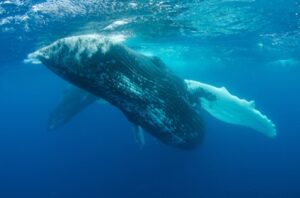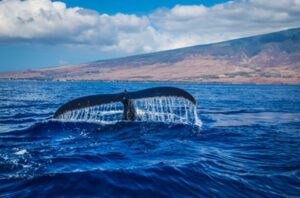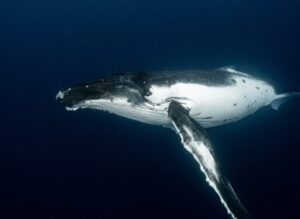Earth has been home to numerous giant creatures throughout its history, from dinosaurs to prehistoric mammals. However, the blue whale is the largest animal that has ever existed on Earth.
The blue whale, the giant of the ocean
The “blue whale” or Balaenoptera musculus is the largest animal that has ever existed on Earth. These marine mammals can grow up to 30 meters long and weigh more than 173 tons. To put that in perspective, that’s roughly the weight of 25 adult African elephants or 3500 average adult humans.
How do blue whales grow?
Scientists believe that blue whales can grow so much because of their food and longevity. These marine mammals feed on krill, a small shrimp-like crustacean that is rich in nutrients and energy. An adult blue whale can eat up to 4 tons of krill in a single day.
In addition, blue whales can live up to 90 years, which gives them plenty of time to grow. As blue whales grow, their body becomes more energy-efficient, allowing them to maintain their gigantic size.
How does the blue whale compare to other giant animals?

Although the blue whale is the largest animal that has ever existed on Earth, there are other animals that come close to it in terms of size. The largest dinosaur known is Argentinosaurus, which was about 40 meters long and weighed about 100 tons. However, dinosaurs went extinct a long time ago, meaning that the blue whale is the largest animal still living on Earth.
Why are blue whales important to the ecosystem?
Blue whales are important to the marine ecosystem because they are top predators, meaning they have no natural predators. By maintaining balance in the food chain, blue whales help maintain the health of the oceans. In addition, blue whales are important for tourism and the fishing industry in many parts of the world.
How has human activity affected blue whales?
Unfortunately, human activity has had a huge impact on blue whale populations. For centuries, humans hunted blue whales for their meat, oil, and other products. In the 1960s, commercial blue whale hunting peaked, leading to the decline of the global blue whale population by more than 90%.
Fortunately, commercial whaling was banned in 1986, which has allowed blue whale populations to slowly recover. However, azaun whales face threats such as ocean pollution, climate change and collision with ships.
What is being done to protect blue whales?

To protect blue whales, a number of measures have been implemented around the world. Many countries have established whale sanctuaries, where whales can live and breed without the threat of hunting or human disruption.
In addition, scientists are working to better understand the behavior and ecology of blue whales to inform conservation policies and practices. For example, whale monitoring programs have been developed to track whale population and behavior around the world.
What can we do to help protect blue whales?
As individuals, there are several things we can do to help protect blue whales. First, we can reduce our consumption of whaling products, such as whale oil and whale ivory. We can also support organizations that work to protect blue whales and their habitat.
In addition, we can be aware of our impact on the environment and reduce our carbon footprint. Climate change is a major threat to blue whales and other marine animals, so reducing our greenhouse gas emissions can help protect these majestic creatures.
Conclusion

The blue whale is the largest animal that has ever existed on Earth, with an impressive size that surpasses any other creature that has ever lived. In addition to their size, blue whales are important to the marine ecosystem and the global economy. However, human activity has had a huge impact on blue whale populations, and it’s important to take steps to protect these majestic creatures and their habitat. As individuals, we can do our part to help protect blue whales and ensure they continue to be a vital part of the marine ecosystem for many years to come.
